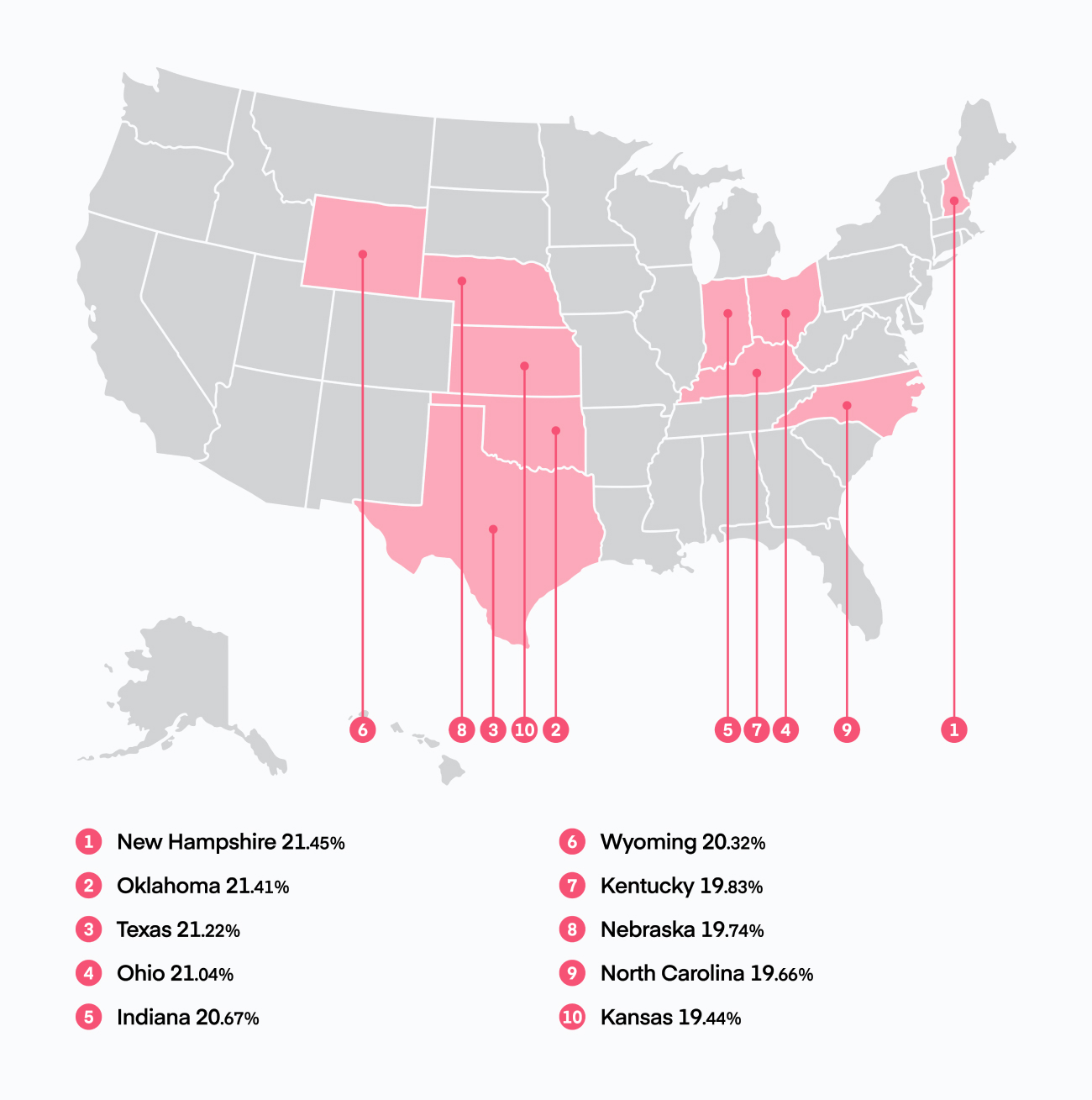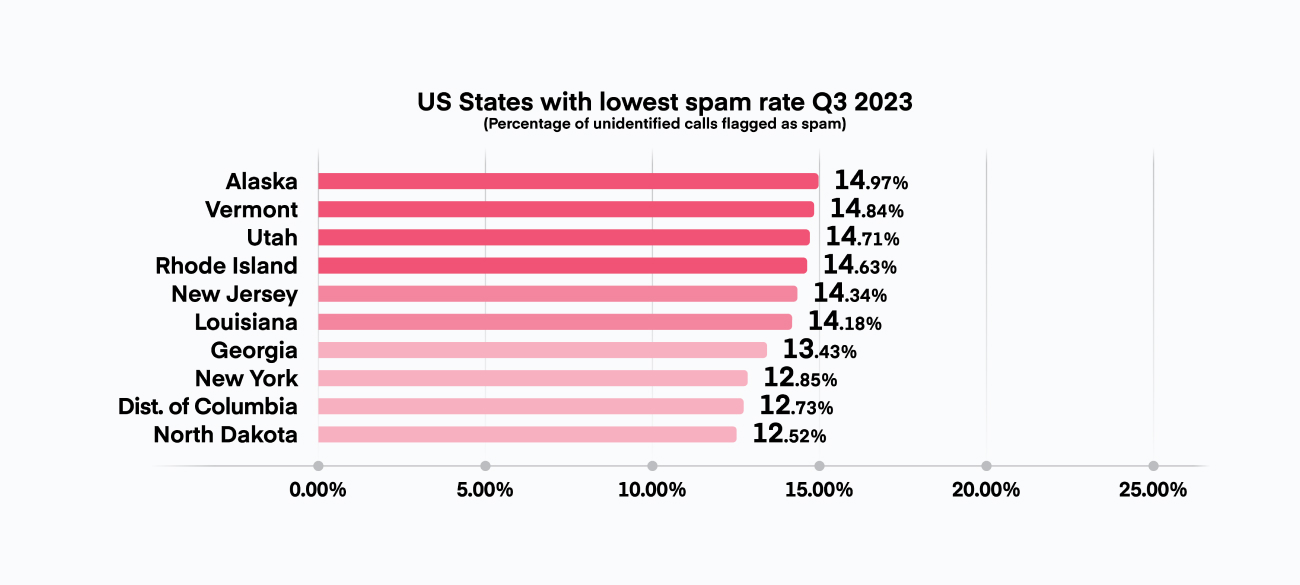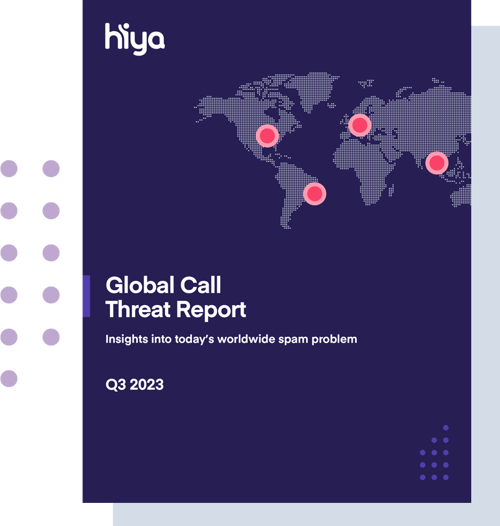-Jan-08-2024-07-59-47-9837-PM.png)
Although New Hampshire is the 41st most populous state, Hiya’s data show that its residents get more spam calls per capita than residents of any other state.
While New Hampshire leads the US with a 21.45% spam rate, it’s followed closely by Oklahoma (21.41%), Texas (21.22%), and Ohio (21.04%).
Those are some Hiya’s most recent Global Call Threat Report findings. The report compares spam call rates in 39 countries worldwide and highlights the US states with the highest spam rates.

New Hampshire tops the list of states with the highest percentage of spam phone calls per capita.
States with the lowest spam rates
If you want to avoid spam calls, consider moving to North Dakota. Its spam rate is only 12.52% — nearly half the rate of New Hampshire. You’ll also find low spam rates in the District of Columbia (12.73%) and New York (12.85%).
Below are the states with the lowest spam rates.

Why New Hampshire?
There’s nothing about New Hampshire that makes it a magnet for spam calls. It receives pretty much the same type of unwanted calls as other states. (See our Top 10 phone scams of 2023.) According to the Federal Trade Commission, which tracks phone scams by state, the most commonly reported scam calls in New Hampshire are imposter scams. That’s a very broad category where fraudsters pretend to be your bank, a government official, an Amazon representative, and much more.
The FTC lists other commonly reported scams in New Hampshire, including healthcare scams, sweepstakes scams, internet/phone/mobile-services scams, and scams involving job opportunities and travel/vacations. According to news reports, one phone scam that’s currently making the rounds in New Hampshire involves fraudsters posing as police officers calling individuals on the state’s sex offender list saying they’ve failed to provide a second DNA test and they need to pay a fine or they’ll be arrested.
Methodology
Spam rates mentioned in this article are per capita: based on the number of residents in each state. US data comes from the Hiya mobile app, from users who have provided their U.S. area code. States with fewer than 1,000 active users were not included.
Hiya defines spam as unwanted calls, both nuisance and fraud, from someone not in an individual’s local address book. Nuisance calls are not illegal, while fraud calls specifically target victims to steal money or personal information.
To learn more about phone spam in the US and other countries worldwide, download the Global Call Threat Report by clicking below.




